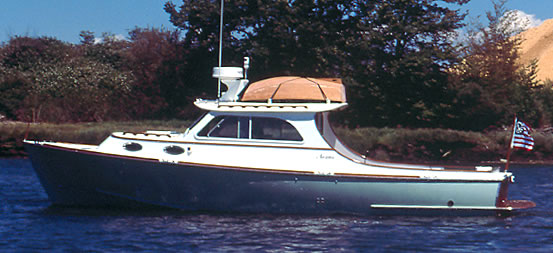
This is a lovely custom wooden boat boat, even at rest. A fully enclosed
pilothouse cruiser, it is a lobster boat type. Notice how the radome protects
the foredeck from the glare of the bow navigation light. The custom dinghy
is a nice fit behind the radar mast.
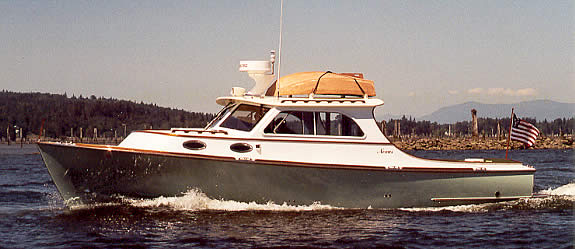
Here we're running just above an idle at about 8 knots. Her wave pattern
and fuss at this speed is not that different from that of a displacement
hull. She steers well at all speeds, and is even steerable in reverse.
That's a little unusual for a single screw powerboat.

The boat is just starting to come on plane. It doesn't have a "bad
speed." You increase throttle: the boat goes faster. No drama.
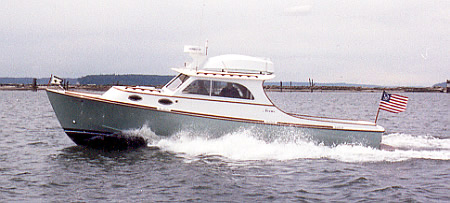
Running right along. Each of the gaps in the toe rail is occupied by a custom cleat.
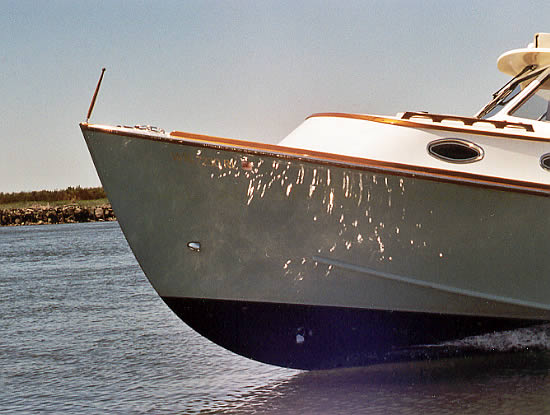
This close up shows the bow thruster coming out of the water as speed
has increased. The fine bow curls the water smoothly away from the hull.
There's lot of buoyancy in that bow. The clamshell vent on the hull hides
the 1.5" drain from the anchor locker in the foredeck.
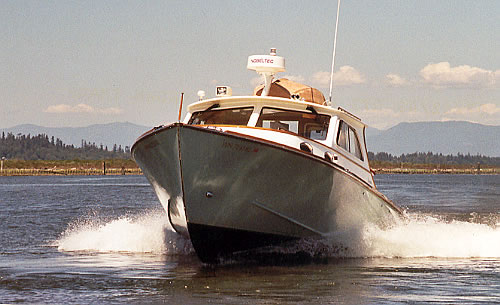
A well-flared bow combined with a fine entry throws the spray out flat
rather than up. It's a very dry boat. Even though she's not fully up yet,
there's good visibility over the bow. If we can see the helm, he can see
us.

Running at about 30 knots, wetted surface has decreased as the boat has
lifted out on plane. The low shaft angle provides a positive moment to
lift the bow, just like trimming out an outboard or I/O. Trim tabs are
used to adjust the running trim.
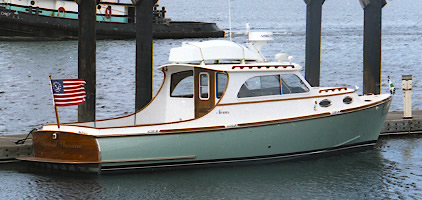
Here's a view of the stern quarter. A river tug goes by in the background.

Admiral Phormio has a varnished African mahogany transom of 3/16" thick bookmatched veneer epoxy glued to the laminated plywood transom. The swimstep is teak, epoxy glued and coated with penetrating epoxy and polyurethane varnish, like the rest of the exterior brightwork. We also ran 3/8" bronze bolts edgewise through the swimstep for added strength. The red-and-chrome buttons on the transom are night lights, to leave on when you dinghy ashore of an evening.
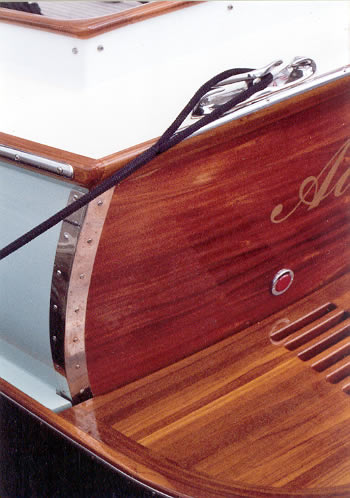
Here's a detail of the transom corner and swimstep.

In the cockpit, looking forward. Most of the cockpit sole consists of hatches which give excellent access to equipment located or stored beneath the self-bailing sole. Two of the four Diesel tanks were installed though the large hatch just aft of the pilothouse bulkhead. The other two were installed though hatches in the pilothouse sole. The two forward cockpit lockers function as steps for cockpit entry. The starboard one is a propane locker for the galley stove. The teak doors above the lockers give access to frequently used storage.
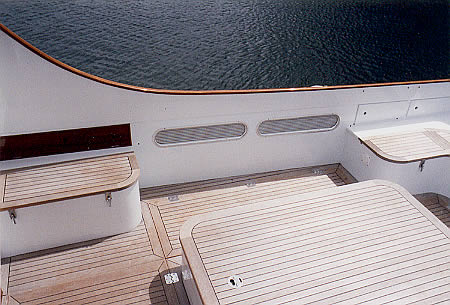
The starboard side of the cockpit. We see two of the four air intake vents which allow the 420HP Yanmar Diesel to breathe. The intake plenums are baffled and sound deadened.
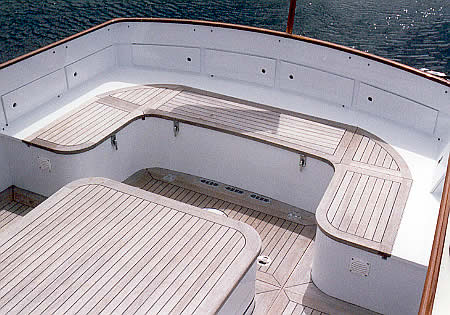
The aft cockpit seat. The cushions have been removed to show the storage lockers above the seats. The fitting which receives the cockpit table leg is just visible aft of the engine box.



